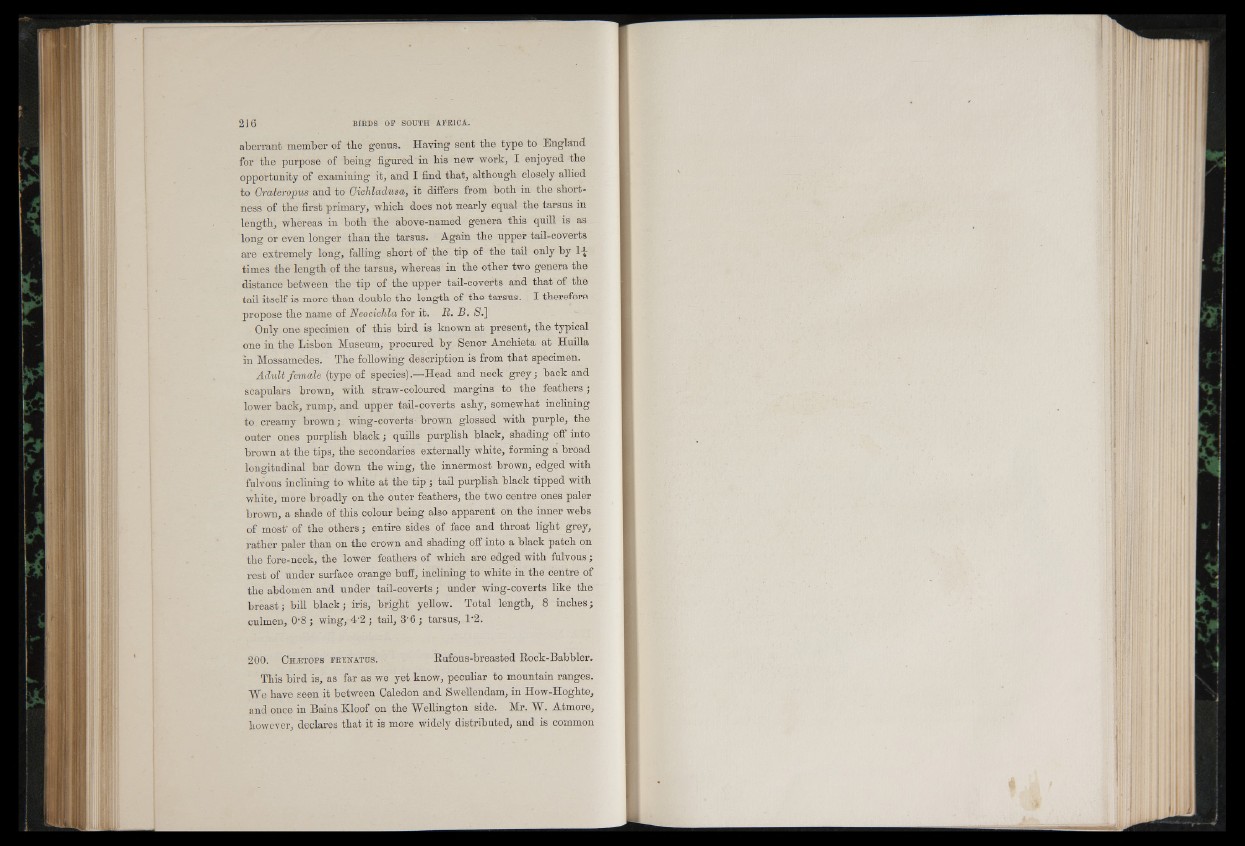
aberrant member of tbe genns. Haying sent the type to England
for the purpose of being figured in his new work, I enjoyed the
opportunity of examining it, and I find that, although closely allied
to Craterojous and to Cichladusa, it differs from both in the shortness
of the first primary, which does not nearly equal the tarsus in
length, whereas in both the above-named genera this quill is as
long or even longer than the tarsus. Again the upper tail-coverts
are extremely long, falling short of the tip of the tail only by 1 -J
times the length of the tarsus, whereas in the other two genera the
distance between the tip of the upper tail-coverts and that of the
tail itself is more than double the length of the tarsus. I therefore
propose the name of Neocichla for it. R. B. S.]
Only one specimen of this bird is known at present, the typical
one in the Lisbon Museum, procured by Senor Anchieta at Huilla
in Mossamedes. The following description is from that specimen.
Adult female (type of species).—Head and neck grey ; back and
scapulars brown, with straw-coloured margins to the feathers ;
lower back, rump, and upper tail-coverts ashy, somewhat inclining
to creamy brown; wing-coverts■ brown glossed with purple, the
outer ones purplish black ; quills purplish black, shading off into
brown at the tips, the secondaries externally white, forming a broad
longitudinal bar down the wing, the innermost brown, edged with
fulvous inclining to white at the tip ; tail purplish black tipped with
white, more broadly on the outer feathers, the two centre ones paler
brown, a shade of this colour being also apparent on the inner webs
of most' of the others ; entire sides of face and throat light grey,
rather paler than on the crown and shading off into a black patch on
the fore-neck, the lower feathers of which are edged with fulvous ;
rest of under surface orange buff, inclining to white in the centre of
the abdomen and under tail-coverts ; under wing-coverts like the
breast; bill black; iris, bright yellow. Total length, 8 inches;
culmen, 0'8 ; wing, 4'2 ; tail, 3'6 ; tarsus, 1'2.
200. C hætop s fr en a tu s . Bufous-breasted Bock-Babbler.
This bird is, as far as we yet know, peculiar to mountain ranges.
We have seen it between Caledon and Swellendam, in How-Hoghte,
and once in Bains Kloof on the Wellington side. Mr. W. Atmore,
however, declares that it is more widely distributed, and is common